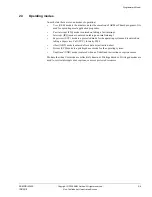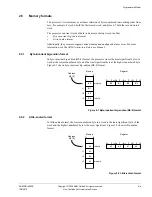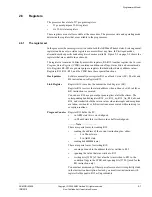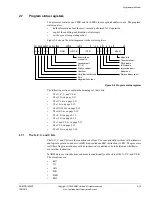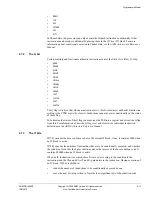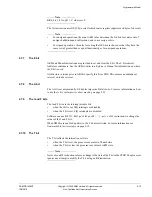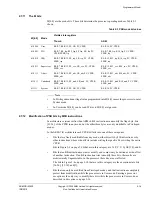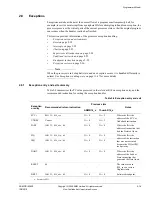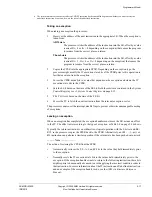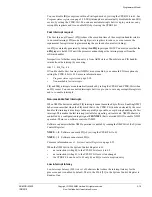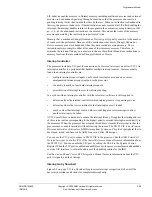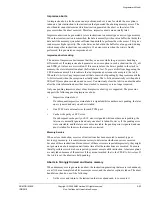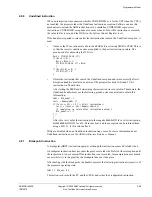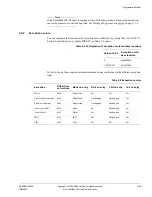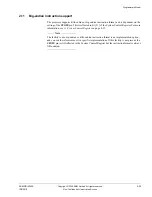
Programmer’s Model
ARM DDI 0363E
Copyright © 2009 ARM Limited. All rights reserved.
2-17
ID013010
Non-Confidential, Unrestricted Access
Taking an exception
When taking an exception the processor:
1.
Preserves the address of the next instruction in the appropriate LR. When the exception is
taken from:
ARM state
The processor writes the address of the instruction into the LR, offset by a value
(current IA + 4 or IA + 8 depending on the exception) that causes the program
to resume from the correct place on return.
Thumb state
The processor writes the address of the instruction into the LR, offset by a value
(current IA + 2, IA + 4 or IA + 8 depending on the exception) that causes the
program to resume from the correct place on return.
2.
Copies the CPSR into the appropriate SPSR. Depending on the exception type, the
processor might modify the IT execution state bits of the CPSR prior to this operation to
facilitate a return from the exception.
3.
Forces the CPSR mode bits to a value that depends on the exception and clears the IT
execution state bits in the CPSR.
4.
Sets the E bit based on the state of the EE bit. Both these bits are contained in the System
Control Register, see
c1, System Control Register
on page 4-35.
5.
The T bit is set based on the state of the TE bit.
6.
Forces the PC to fetch the next instruction from the relevant exception vector.
The processor can also set the interrupt disable flags to prevent otherwise unmanageable nesting
of exceptions.
Leaving an exception
When an exception has completed, the exception handler must move the LR, minus an offset,
to the PC. The offset varies according to the type of exception, as Table 2-4 on page 2-16 shows.
Typically the return instruction is an arithmetic or logical operation with the S bit set and Rd =
R15, so the processor copies the SPSR back to the CPSR. Alternatively, an
LDM ..,{..pc}^
or
RFE
instruction can perform a similar operation if the return state has been pushed onto a stack.
Note
The action of restoring the CPSR from the SPSR:
•
Automatically restores the T, E, A, I, and F bits to the value they held immediately prior
to the exception.
•
Normally resets the IT execution state bits to the values held immediately prior to the
exception. If the exception handler wants to return to the following instruction, these bits
might require to be manually advanced to avoid applying the incorrect condition codes to
that instruction. For more information about the IT instruction and Undefined instruction,
and an example of the exception handler code, see the
ARM Architecture Reference
Manual
.
b. The return instruction you must use after an UNDEF exception has been handled depends on whether you want to retry the
undefined instruction or not and, if so, on the size of the undefined instruction.


